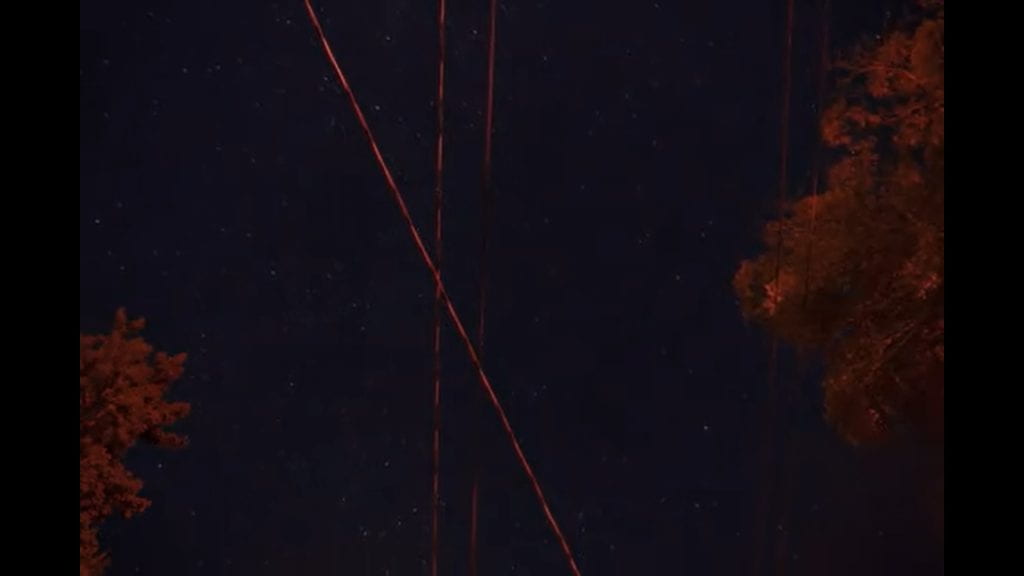
I used to go out to nature a lot more frequently. A weekend car trip to a national or state park was a highlight, packing some sandwiches and treats, traversing two or three trails and reading some plaques. Of course, I still go on such trips, but the thrill of driving across the highway to a reserve doesn’t do the trick as much; maybe it’s a stage of my life, or maybe it’s just my technology addiction.
I haven’t really thought as much about this for a while. But then I watched a short film by Peggy Ahwesh, Curve the Night Sky, first for a course and then again at our annual Revolutions Per Minute Festival. The more I consider it, the more I think back to my own relationship with nature.
Ahwesh’s film has no characters and no story; as a matter of fact, we never meet any people. However, we are repeatedly made aware of humanity’s presence, most directly through a shot of cars on the highway. But what Ahwesh has depicted is an almost surreal environment, where we are somehow there in an almost indiscernible way.
As one can imagine, most of this film takes place at nighttime. The stars are indeed visible, and oftentimes they shine quite bright, drawing our attention. But there’s almost always something else in the frame: tree branches and leaves, electrical wires, a rooftop. At a certain point, it feels as if we’re outpacing nature itself, taking up more and more of that precious, beautiful space.
Ahwesh also demonstrates a keen sense for the use of sound. Sometimes a gentle wind rustles in the background, or the chirping of a cricket is included, the natural sounds of the night. But Ahwesh also incorporates the eerie sounds of electronic transmission, heightened in volume so much that it feels pervasive.
Ahwesh takes things further with the use of effects. Oftentimes the electrical wires are lit up blue, as if their power has manifested itself into a physical dimension. At a backyard, weird green dots appear, the sort of thing we’d expect from a Star Trek episode. At one point it appears aliens actually make an appearance, with a UFO flying through the sky. The night sky seems to be coming down to us just as we come up to it.
It is interesting how much of the film is captured through low-angle shots. While Ahwesh does sometimes shift her perspective towards ground level, she always goes back up to the stars, and what strange objects attempt to get to them.
The film’s pace is so constant and soothing that sometimes it almost lulls the viewer. Unlike some of her other work, this film is imbued with a certain calmness, even in its most science-fictional moments, that it’s easy to just get swept into this strange world. Indeed, it appears that in this world, people have been gradually transmuted into those means of electronic transmission. Maybe we can curve the night sky, but where will we be?
